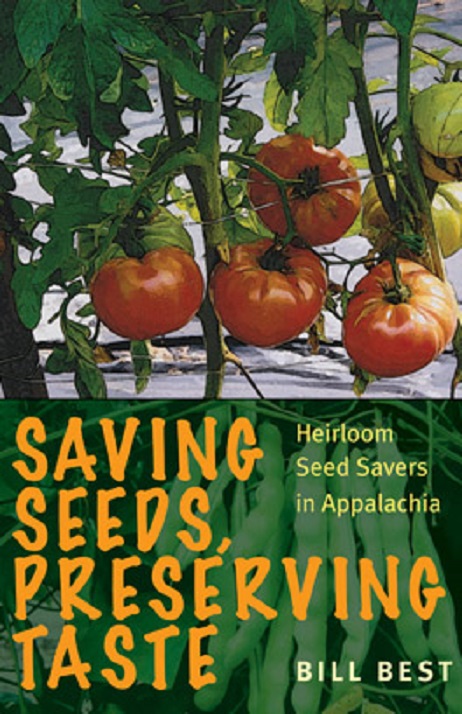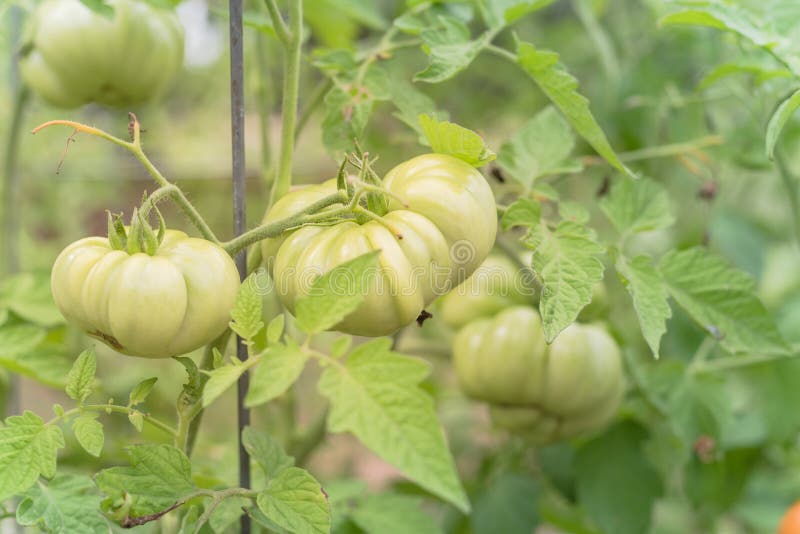
Heirloom Tomatoes: A Southern Gardener’s Pride and Culinary Delight
The humid air hangs heavy, thick with the promise of summer. In gardens across the South, something magical is happening. Vines, heavy with fruit, are bowing under the weight of globes of every imaginable color and shape – heirlooms. These aren’t your uniform, store-bought tomatoes. These are the descendants of generations past, each a unique testament to flavor, resilience, and the art of seed saving.
Heirloom tomatoes, with their intriguing histories and unforgettable tastes, are a true Southern treasure. This article explores the journey of growing, cooking, and preserving these living heirlooms, unlocking the secrets to cultivating and celebrating their unique beauty.
The Story in the Seed: Defining Heirloom Tomatoes
Before we delve into the dirt, let’s define our terms. What exactly is an heirloom tomato? The answer, like the tomatoes themselves, is wonderfully complex. Generally, an heirloom tomato is defined by:
- Open Pollination: Heirloom tomatoes are naturally pollinated, meaning they haven’t been hybridized to achieve specific traits. This allows their seeds to be saved and produce plants nearly identical to the parent plant.
- Age & Provenance: Most sources agree that heirloom tomatoes are at least 50 years old, tracing back to seeds passed down through families or carefully preserved within communities.
- Flavor Over Function: Unlike commercially grown tomatoes bred for shelf life and uniformity, heirlooms are prized for their exceptional flavor profiles, even if that means they are more delicate and less predictable.
This combination of traits results in a diversity of flavors, textures, and colors rarely found in modern grocery stores. Imagine the tang of a Cherokee Purple, the sweetness of a Kellogg’s Breakfast, or the earthy depth of a Black Krim. These are experiences, not just ingredients.
Getting Your Hands Dirty: Growing the Heirloom Dream
Growing heirloom tomatoes can be more challenging than cultivating their hybrid cousins, but the rewards are immeasurable. Here’s a guide to get you started:
1. Choosing Your Champions: The first step is selecting the right varieties for your region and taste preferences. Consider your climate, available space, and intended use (slicing, sauces, etc.). Local nurseries and farmers’ markets are excellent resources for finding varieties well-suited to your area.
Table 1: Heirloom Tomato Variety Guide
| Variety | Color | Flavor Profile | Best For |
|---|---|---|---|
| Brandywine Pink | Pink | Rich, sweet, tangy | Slicing |
| Cherokee Purple | Dusky Rose | Smoky, complex, slightly acidic | Salads, sandwiches |
| Black Krim | Dark Purple | Earthy, salty, intense | Roasting, sauces |
| Green Zebra | Green Striped | Tart, tangy, citrusy | Salads, pickling |
2. Starting Strong: You can start seeds indoors 6-8 weeks before the last expected frost or purchase seedlings from a reputable nursery. When starting from seed, use a good quality seed-starting mix and provide ample light.
3. Location, Location, Location: Heirloom tomatoes need at least 6-8 hours of direct sunlight per day. Choose a location with well-drained soil that is rich in organic matter.
4. Soil Preparation: Amend your soil with compost or well-rotted manure before planting. This will provide essential nutrients and improve drainage. Test the soil pH, aim for 6.0 to 6.8 for optimal growth.
5. Planting & Support: Space your tomato plants 2-3 feet apart. Provide support using stakes, cages, or trellises. Heirloom tomatoes are often indeterminate (meaning they continue to grow throughout the season), so strong support is crucial.
6. Watering & Feeding: Water deeply and regularly, especially during dry spells. Avoid overhead watering, which can promote disease. Fertilize with a balanced tomato fertilizer every few weeks, following the package instructions.
7. Pest & Disease Control: Monitor your plants regularly for signs of pests or diseases. Common problems include aphids, tomato hornworms, and early blight. Use organic pest control methods whenever possible, such as neem oil or insecticidal soap. Proper air circulation and avoiding overhead watering can help prevent fungal diseases.
8. Patience & Pruning: Be patient! Heirloom tomatoes can take longer to mature than hybrid varieties. Prune your plants to remove suckers (small shoots that grow between the main stem and branches) to improve air circulation and focus energy on fruit production.
From Vine to Plate: Cooking with Heirloom Magic
The true magic of heirloom tomatoes lies in their unparalleled flavor. Forget bland, watery tomatoes – these varieties explode with taste, adding depth and complexity to any dish.
1. Fresh is Best: Heirloom tomatoes are at their peak when eaten fresh. Slice them thickly and sprinkle with sea salt and freshly cracked pepper for a simple yet sublime treat.
2. Salads & Sandwiches: The vibrant colors and diverse flavors of heirlooms make them a star ingredient in salads and sandwiches. Pair them with fresh mozzarella, basil, and balsamic glaze for a classic Caprese salad. Use them to elevate your BLT or grilled cheese to gourmet status.
3. Sauces & Salsas: Heirlooms are perfect for making rich, flavorful sauces and salsas. Roast them with garlic and herbs for a rustic pasta sauce. Dice them with onions, peppers, and cilantro for a vibrant salsa.
Table 2: Heirloom Tomato Culinary Pairings
| Tomato Variety | Flavor Notes | Great Pairings |
|---|---|---|
| Brandywine | Sweet, Tangy | Basil, Mozzarella, Balsamic |
| Black Krim | Earthy, Salty | Feta, Olives, Garlic |
| Green Zebra | Tart, Citrusy | Avocado, Lime, Cilantro |
4. Roasting & Grilling: Roasting or grilling heirloom tomatoes intensifies their flavor, bringing out their natural sweetness. Drizzle them with olive oil, season with herbs, and roast until tender. Grill them alongside your favorite meats or vegetables.
5. Soups & Stews: Add diced or pureed heirloom tomatoes to soups and stews for a burst of flavor and color. They work especially well in gazpacho, tomato soup, and vegetable stews.
Preserving the Taste of Summer: Capturing the Heirloom Harvest
The heirloom tomato season is fleeting, so it’s essential to preserve the bounty to enjoy throughout the year.
1. Canning: Canning is a classic method for preserving tomatoes. You can can whole tomatoes, crushed tomatoes, or tomato sauce. Always follow safe canning practices to prevent spoilage.
2. Freezing: Freezing is a simple and effective way to preserve tomatoes. You can freeze them whole, diced, or pureed. Blanching tomatoes before freezing helps preserve their color and texture.
3. Drying: Drying tomatoes concentrates their flavor, creating a delicious and versatile ingredient. You can sun-dry them, use a dehydrator, or roast them in a low oven. Dried tomatoes can be used in sauces, salads, and as a snack.
4. Fermenting: Fermenting tomatoes is a unique way to preserve them while adding beneficial probiotics. Fermented tomatoes can be used in salsas, sauces, or as a condiment.
Table 3: Heirloom Tomato Preservation Methods
| Method | Pros | Cons | Best For |
|---|---|---|---|
| Canning | Long Shelf Life | Requires Special Equipment, Time Consuming | Sauces, Whole Tomatoes |
| Freezing | Easy, Quick | Can Affect Texture | Purees, Diced Tomatoes |
| Drying | Concentrated Flavor | Time Consuming, Requires Space | Snacks, Adding to Dishes |
Beyond the Plate: The Cultural Significance of Heirloom Tomatoes
Heirloom tomatoes are more than just a delicious ingredient; they are a living link to the past. They represent a commitment to biodiversity, sustainable agriculture, and the preservation of culinary traditions. By growing, cooking, and preserving heirloom tomatoes, we are not only enjoying their unique flavors but also honoring the stories and legacies of those who came before us. They’re a celebration of the South’s rich agricultural heritage and a reminder that some of the best things in life are worth the extra effort. So, get your hands dirty, savor the flavors, and join the movement to preserve these precious heirlooms for generations to come. They are, after all, a true Southern treasure.
:max_bytes(150000):strip_icc()/growing-tomatoes-1403296-01-e87fc6443b55423890448cabb12efeba.jpg)
Additional Information
Heirloom Tomatoes: Beyond the Backyard – Cultivating, Culinary Application, and Preservation of a Southern Treasure
Heirloom tomatoes, with their vibrant colors, unique shapes, and complex flavors, have transcended mere garden staples to become culinary darlings and symbols of agricultural biodiversity. While often associated with the South due to its favorable climate and long growing seasons, understanding their cultivation, utilization in Southern cuisine, and preservation techniques requires a more nuanced approach than simple “grow and eat.” This analysis delves deeper into these aspects, providing insights beyond a basic overview.
I. The Art and Science of Heirloom Tomato Cultivation:
The allure of heirloom tomatoes lies in their non-hybridized lineage, often passed down for generations. This genetic purity, however, also makes them more susceptible to disease and environmental challenges than commercially bred hybrids. Successful heirloom tomato cultivation in the South, with its humid summers and varying soil types, requires a keen understanding of:
- Variety Selection: Not all heirlooms thrive equally in all Southern environments. Consider factors like disease resistance (particularly against Fusarium wilt and Septoria leaf spot), heat tolerance, and days to maturity. For example, the ‘Mortgage Lifter,’ a Southern favorite, is known for its large size and robust flavor, but benefits from diligent staking and disease prevention in humid climates. Conversely, ‘Cherokee Purple,’ while possessing excellent flavor, may be more prone to cracking under heavy rainfall. Researching local university extension programs and consulting with experienced regional growers is crucial for selecting appropriate varieties. A University of Florida study, for example, found significant variation in disease resistance among different heirloom tomato varieties under South Florida conditions, highlighting the importance of site-specific cultivar selection.
- Soil Management: Heirloom tomatoes demand nutrient-rich, well-drained soil with a slightly acidic pH (6.0-6.8). Southern soils often require amendment with compost, aged manure, or other organic matter to improve drainage, aeration, and nutrient availability. Soil testing is highly recommended to identify nutrient deficiencies and adjust accordingly. The North Carolina Cooperative Extension offers valuable resources on soil testing and amendment strategies tailored to the Piedmont and Coastal Plain regions.
- Pest and Disease Management: Organic and integrated pest management (IPM) strategies are paramount for heirloom tomatoes. Common Southern pests include tomato hornworms, aphids, and whiteflies, while diseases like early blight, late blight, and blossom-end rot can devastate crops. Preventative measures such as crop rotation, proper spacing, mulching, and regular inspection are crucial. Using organic pesticides like Bacillus thuringiensis (Bt) for hornworms and insecticidal soap for aphids can minimize harm to beneficial insects. Addressing blossom-end rot, often caused by calcium deficiency and irregular watering, requires consistent soil moisture and, if necessary, calcium supplementation.
- Grafting: An increasingly popular technique involves grafting heirloom scions (the top part of the plant) onto disease-resistant rootstocks. This allows growers to combine the desirable flavor and characteristics of heirloom varieties with the vigor and disease resistance of hybrid rootstocks. This technique has proven particularly effective in mitigating soil-borne diseases prevalent in Southern soils, such as Fusarium and Verticillium wilt. While requiring more technical expertise, grafting can significantly increase yields and reduce the need for chemical treatments.
II. Culinary Applications in Southern Cuisine:
Heirloom tomatoes have revolutionized Southern cuisine, moving beyond simple slicing and dicing. Their diverse flavor profiles – from the tangy sweetness of ‘Brandywine’ to the smoky earthiness of ‘Black Krim’ – lend themselves to a wide range of dishes.
- Elevated Classics: Heirloom tomatoes elevate traditional Southern dishes. Consider a classic tomato sandwich: using a ‘Pineapple’ tomato with its fruity sweetness and creamy texture transforms the dish from a simple lunch to a gourmet experience. Similarly, incorporating a medley of colorful heirloom tomatoes in a Southern tomato pie adds depth and visual appeal.
- Modern Southern Interpretations: Chefs are increasingly incorporating heirloom tomatoes into modern Southern dishes. Grilling them with a balsamic glaze and serving them over creamy grits or using them in a refreshing gazpacho are examples of how heirloom tomatoes are reinterpreting Southern culinary traditions.
- Farm-to-Table Movement: The emphasis on local and seasonal ingredients in the farm-to-table movement has fueled the demand for heirloom tomatoes. Restaurants in Charleston, Savannah, and New Orleans often feature dishes highlighting locally grown heirloom tomatoes, showcasing the region’s agricultural heritage. A case study of Husk Restaurant in Charleston, known for its commitment to Southern ingredients, reveals how heirloom tomatoes are integral to their seasonal menus, contributing to both flavor and aesthetic appeal.
- Economic Impact: The demand for heirloom tomatoes has created new economic opportunities for Southern farmers. Small-scale farms specializing in heirloom varieties cater to farmers’ markets, restaurants, and specialty grocery stores, contributing to the local food economy. This also preserves agricultural biodiversity and supports sustainable farming practices.
III. Preservation Techniques for Extending the Southern Harvest:
The short growing season of heirloom tomatoes makes preservation crucial for enjoying their flavors year-round. Traditional Southern preservation methods, such as canning and pickling, can be adapted for heirloom varieties.
- Canning: Canned heirloom tomatoes can be used in sauces, stews, and soups. Acidity is a critical factor in canning, as tomatoes are borderline acidic and require added acid (lemon juice or citric acid) to ensure safety. Using a pressure canner is highly recommended for canning tomatoes to eliminate the risk of botulism. Experimenting with different heirloom varieties for canning can yield unique flavor profiles in the finished product.
- Pickling: Pickled green heirloom tomatoes are a Southern delicacy. Using unripe, firm tomatoes and a brine of vinegar, salt, sugar, and spices creates a tangy and crunchy condiment that adds a flavorful punch to sandwiches and salads.
- Dehydration: Dehydrating heirloom tomatoes concentrates their flavors, creating a chewy and intensely flavored snack or ingredient. Sun-dried tomatoes can be used in pesto, pasta dishes, and salads.
- Freezing: While freezing whole tomatoes can alter their texture, pureeing or roasting them before freezing preserves their flavor and makes them ready for use in sauces and soups.
- Seed Saving: Preserving heirloom tomatoes also means preserving their genetic heritage. Saving seeds from your best-performing plants allows you to grow the same varieties year after year, adapting them to your specific microclimate. Proper seed-saving techniques, including selecting ripe, disease-free fruits and fermenting the seeds to remove the gelatinous coating, are crucial for ensuring seed viability.
Conclusion:
Heirloom tomatoes represent more than just a flavorful fruit; they embody a rich agricultural heritage, a culinary revolution, and a commitment to sustainable food systems. Their cultivation requires a nuanced understanding of Southern climate and soil, while their culinary applications range from elevating classic dishes to inspiring modern interpretations. Preservation techniques allow us to savor their unique flavors beyond the growing season, while seed saving ensures the continuation of these valuable varieties. By embracing the art and science of heirloom tomato cultivation, utilizing them creatively in Southern cuisine, and mastering preservation techniques, we can truly appreciate this Southern treasure. Further research into specific regional adaptations of heirloom varieties, coupled with educational initiatives promoting sustainable farming practices, will be critical in ensuring their continued availability and appreciation for generations to come.






